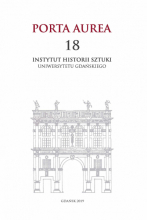Kierunki rozwoju we wzornictwie fajansu włocławskiego w latach 1945-1991
Abstrakt
The article is an attempt to summarize the history of the faience industry in Wloclawek, which goes back to 1873 and ends in 1991. Before WW II the city had a few main factories active, most significant of them being ‘Teichfeld and Asterblum’ and ‘Leopold Czamański’. The war took its toll on the faience industry: after 1945 significant efforts were made to revive it after a long break. It was then that the Polish Institute of Industrial Design decided to start its cooperation with artists in an attempt to revive Polish craftsmanship and industrial design, sending artists to work at the factories and cooperate with industrial specialists. This resulted in a series of courses conducted for the factory painters in Wloclawek, led by Antoni Buszek and later Helena and Lech Grzeskiewicz; the artists taught the often highly-specialised in their craft painters the basics of composition, encouraging them to compose their own decorations based on the newly-acquired knowledge as well as their previous experience. The courses brought very good results and were a step on the way to revive the unique style of Wloclawek’s faience. It is only after WW II that the Włocławek faience gained autonomy as its own product, without trying to mimic (in terms of design) porcelain, which at the time had already dominated the market as a more durable and ‘noble’ material. Władysław Bortnowski, who was at the time the factory’s artistic director, decided that the only way to stay on the market was to make unique, hand-painted products which had different assets than porcelain. His idea was to bring back the hand-painted flower patterns that had been used in Wloclawek during the interwar period, and that many of the older workers could remember and recreate. The new ways of thinking about creative processes in Polish industrial design also inspired some new trends; one of them being the so-called ‘new-look’, a style that had successfully made its way to Włocławek’s factories as well. Even though the modern-type faience was produced for a little over a decade, it is considered to be a significant milestone in the factory’s development.
The article underlines the importance of that strategic decision in the later development of the well-known style, which makes the factory’s products recognizable even today. The author also writes about the so-called faience Biennale, officially called that since 1973: the date marking the 100th anniversary of the faience industry in Wloclawek. 1973 was also the year of changes in the board structures of the factory. Working conditions were said to have worsened gradually, resulting in poorer quality products being released to the market. The period 1970–1980 also brought changes to the range of products sold, shifting the focus from table sets to decorative objects, such as figurines and vases etc.
In the final pages the author tries to answer some questions, such as why the flower-patterned faience gained such popularity and what made the faience factory in Włocławek survive and flourish after WW II.
Downloads
Bibliografia
Banaś Barbara, Polski New Look, Wrocław 2011.
Bandziak-Kwiatkowska Karolina, Archiwum po wzorcowni Fabryki Fajansu w zbiorach Muzeum Ziemi Kujawskiej i Dobrzyńskiej we Włocławku, „Rocznik Muzealny” 2012, t. 14, s. 10.
Bandziak-Kwiatkowska Karolina, Pamiątka z fajansu. W 140. rocznicę powstania przemysłu ceramicznego we Włocławku, Włocławek 2016.
Bilewicz Hubert, Friedrich Jacek, Między nacjonalizmem a modernizmem: wobec tradycji ludowych i wernakularnych w dziejach polskiego designu w latach 1919−2009 [w:] Poszukiwanie tożsamości kulturowej w Europie Środkowo-Wschodniej 1919−2014, red. Irena Kossowska, Toruń 2015.
Czajkowski Walenty, Działalność Ośrodka Wzorcującego nr 2, „Szkło i Ceramika” 1953, nr 9, s. 238−240.
Frąckiewicz Anna, Cały ten zgiełk. Uwagi o stylu lat 50. XX wieku w polskim wzornictwie [w:] W kręgu sztuki przedmiotu. Studia ofiarowane Profesor Irenie Huml przez przyjaciół, kolegów i uczniów, red. Maria Dłutek, współpraca Anna Kostrzyńska-Miłosz, Warszawa 2011, s. 26−37.
Hankowska Romualda, Fajans włocławski, Wrocław 1991.
Jurczyk Rajmund Stanisław, Przemysł ceramiki szlachetnej w latach 1960−1980, „Szkło i Ceramika” 2006, nr 1, s. 32.
Korduba Piotr, Ludowość na sprzedaż, Warszawa 2013.
Nowakowski Piotr, Fantastyczna ceramika użytkowa. Włocławskie fajanse z lat 1953−1965 w kolekcji Muzeum Ziemi Kujawskiej i Dobrzyńskiej we Włocławku, Włocławek 2008.
Olejniczak Jolanta, Dzieje Zakładu Ceramiki i Szkła, „Prace i Materiały” 1988, z. 127, s. 11.
Rydzyńska Marta, Ceramika według Grześkiewiczów, „Szkło i Ceramika” 2013, nr 6, s. 32−33.
Stadnicki Zbigniew Michał, Konferencja we Włocławku, „Szkło i Ceramika” 1952, nr 5, s 5−6.
Stadnicki Zbigniew Michał, Po XXVI Międzynarodowych Targach Poznańskich, „Szkło i Ceramika” 1957, nr 10, s. 284−288.
Stadnicki Zbigniew Michał, W poszukiwaniu nowych wzorów szkła i ceramiki, „Szkło i Ceramika” 1963, nr 6, s. 170.
Szeliga Franciszek, Przemysł włocławski, Włocławek 1928.
Zbyszewska Stanisława, Sprawozdanie z kursu doszkalania estetycznego zespołu robotniczego malarek w Zakładach Fajansu we Włocławku, „Szkło i Ceramika” 1952, nr 3, s. 3−4.

 Uniwersyteckie Czasopisma Naukowe
Uniwersyteckie Czasopisma Naukowe




